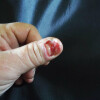I only started loading last winter. The first few sessions at the bench, I was well aware that after a while you could get in a zone and start thinking about other things, or just go on auto pilot. Those first 2 or 3 sessions I pulled quite a few bullets to make sure I hadn't screwed something up.
About the 4th session I started to stick to a system: size and prime the batch I wanted to work on. Leave the bench and go do something else. Come back later and drop powder and seat. Also, small batches, 50-100 at a time.
Now this is either something everyone knows, or I am doing it wrong, but it works for me. The same reason I wanted a turret instead of a progressive, I want my eyes on every step. I went to this method early and I stuck with it, and I never sit at the bench and second guess myself because I took most of the chances to screw something up out of the equation.
A range trip this last summer I was shooting a 24" 45LC 1892 replica. The ammo was from my first session at the bench last winter. The second or third shot sounded just like a dry fire.
I stopped. Had I short stroked the lever and not ejected the spent case? Had a new round not loaded? Is there a case in the chamber? Does the case in the chamber have a strike on the primer?
Those are all the things I thought before I even moved.
Chamber cleared, tube emptied and lever open, I pointed the top of the open receiver skyward and gave a peek down the bore from the muzzle. Darkness. I rammed the lodged bullet out of the bore with a cleaning rod and didn't have any more issues with that batch of ammo. That bullet sits on my pipe rack as a reminder.
That cartridge had a bullet seated on an empty case. The primer was enough to lodge it in the bore, but there was no more sound when this happened than a dry fire. It would have been oh so easy to just keep going, and I see how people do it.
I recognized very early that you could make a very serious mistake at the bench and sought to reduce the probability that I would. Very early I came up with a system that for me, all but eliminates the possibility that I will make that mistake. When I'm out shooting I pay attention and if something happens that isn't quite right I stop and think it through before I act.
tl;dr
Come up with a system that keeps your attention on what you're doing at the reloading bench. Break your loading down into sessions. Pay attention, be safe and have fun.
About the 4th session I started to stick to a system: size and prime the batch I wanted to work on. Leave the bench and go do something else. Come back later and drop powder and seat. Also, small batches, 50-100 at a time.
Now this is either something everyone knows, or I am doing it wrong, but it works for me. The same reason I wanted a turret instead of a progressive, I want my eyes on every step. I went to this method early and I stuck with it, and I never sit at the bench and second guess myself because I took most of the chances to screw something up out of the equation.
A range trip this last summer I was shooting a 24" 45LC 1892 replica. The ammo was from my first session at the bench last winter. The second or third shot sounded just like a dry fire.
I stopped. Had I short stroked the lever and not ejected the spent case? Had a new round not loaded? Is there a case in the chamber? Does the case in the chamber have a strike on the primer?
Those are all the things I thought before I even moved.
Chamber cleared, tube emptied and lever open, I pointed the top of the open receiver skyward and gave a peek down the bore from the muzzle. Darkness. I rammed the lodged bullet out of the bore with a cleaning rod and didn't have any more issues with that batch of ammo. That bullet sits on my pipe rack as a reminder.
That cartridge had a bullet seated on an empty case. The primer was enough to lodge it in the bore, but there was no more sound when this happened than a dry fire. It would have been oh so easy to just keep going, and I see how people do it.
I recognized very early that you could make a very serious mistake at the bench and sought to reduce the probability that I would. Very early I came up with a system that for me, all but eliminates the possibility that I will make that mistake. When I'm out shooting I pay attention and if something happens that isn't quite right I stop and think it through before I act.
tl;dr
Come up with a system that keeps your attention on what you're doing at the reloading bench. Break your loading down into sessions. Pay attention, be safe and have fun.



